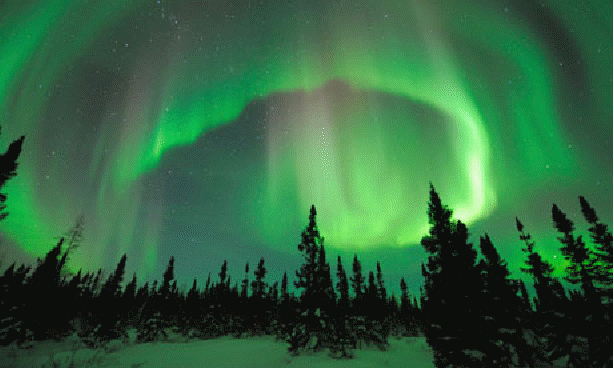Clouds of gas are regularly ejected from the surface of the Sun – events called coronal mass ejections. If one of these mass ejections reaches Earth, usually after two or three days, it collides with the Earth’s magnetic field. Close to the Earth, the field is similar to that produced by a bar magnet (but there is also a long magnetic tail caused by the stream of particles from the Sun (the solar wind).
When a coronal mass ejection collides with the magnetic field, many charged particles - mostly electrons - are trapped in the Earth's magnetic field and experience magnetic forces as they move in the Earth's magnetic field. The force is given by Fleming's left hand rule, the effect being that the charged particles spiral into the Earth's magnetic north and south poles, gaining energy as they go. When they collide with oxygen and nitrogen atoms, they produce dazzling auroral light.

Although more frequent at towards the poles they have been seen closer to the equator as far south as Mexico, and although they are only really visible during the night, the phenomena that produce them occur at all hours, day and night.
The colours and patterns produced depend are from the types of ions or atoms involved and the altitude - blue violet/reds occur below 60 miles (100 km), with bright green strongest between 60-150 miles (100-240 km). Above 150 miles (240 km) ruby reds appear.. Displays may take many forms, including rippling curtains, pulsating globs, traveling pulses, or steady glows.
